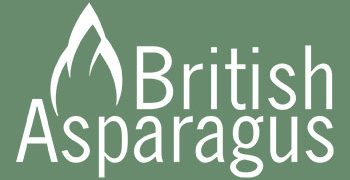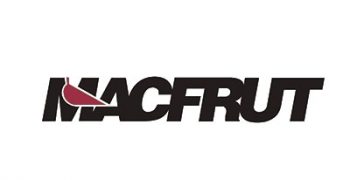Irrigation must be adapted to needs of asparagus crop
Like all plants, asparagus is largely composed of water. If you need convincing, all you have to do is cut a spear to see a droplet appear in less than a minute. Nevertheless, “when it comes to providing it with this vital element, it is not necessary to give it a bath, because it hates soaking its feet in the water. It prefers a shower,” says international consultant Christian Befve. Indeed, the plant seems to dread stagnation at root level. This is why asparagus likes well drained soils. And even if the size of its root system can lead one to believe that this plant is adapted to, or even resistant to drought, its water needs are actually significant. The needs of asparagus are close to the PET (potential evapotranspiration). In temperate climates in the Northern Hemisphere (Europe, North America), this represents 400 to 500 mm from the end of April to mid-September. This is because the plant fears water stagnation at the root level. This is why asparagus likes well drained soils. However, its water needs are significant. Even if the size of its root system can lead one to believe that this plant is adapted, or even resistant, to drought. The needs of asparagus are close to the PET.
Avoiding the umbrella effect

All over the world, depending on the production area and technique used, the water needed for plant development is supplied by three methods: gravity irrigation by flooding, sprinklers and drip irrigation. It is estimated that only 5% of the world’s asparagus acreage is solely rain-fed, showing the importance of irrigation for this crop. Drip irrigation is the most used water supply method, representing 70% of surfaces, while flooding is used for 15% and sprinklers 15%. (source: C.Befve). Sprinklers can also be used under certain conditions to protect the crop from frost (see box). For maximum efficiency, water must be supplied at the root level. However, 80% of the root volume lies under the foliage. In the case of the gravity method (flooding between the rows) or sprinklers (which are prone to the ‘umbrella effect’, whereby the water does not penetrate below foliage), the water does not reach the roots, unlike what occurs with drip irrigation. It should be noted that the underground drip method used in the early days of this technique (1980-90s) has now been abandoned worldwide in favour of surface drip irrigation. Placed above the root level, the drip line creates the recommended ‘shower effect’. Localised sprinkler irrigation is a possible variant of localised drip irrigation. In this case, the water is supplied by sprinklers placed under the foliage. Water is also brought directly to the mound. “This technique is particularly attractive due to its use of surface water and/or water with a high mineral load (calcium, iron), which leads to problems with clogging of the drippers,” Befve said.
Drip irrigation allows precise control

The water supply must allow for the hydrological comfort of the plant in order to ensure the development of the shoots – which will later be harvested as spears in the first phase of the crop cycle – then leaf stalks and foliage. This second part of the vegetative cycle provides storage of reserves for the following year. Gravity irrigation allows for infrequent inputs of large volumes of water that saturate the soil every 3 to 4 weeks. The plant feeds on water retained in the “readily usable reserve” of the soil constituted by the clay-humic complex. This technique can only be used in soils with a high retention capacity. Its effectiveness is very limited in sandy soils. With sprinklers, water can be applied every week, depending on its availability, and the technical means used (strips, sprinklers). This regularity allows for more homogeneous water supplies to satisfy a plant’s needs. With drip irrigation, water can be applied several times a week, depending on the needs of the plant and the state of the soil reserves estimated using tensiometric probes. The division of the inputs makes it possible to maintain the “soil volume/air volume” ratio, which is favourable to the oxygenation of the roots. “It is only with drip irrigation that we can really talk about irrigation management,” says Christian Befve.
Hydrological comfort for the plant
“This control can be seen in the field directly on the plant. When the plant is in hydrological comfort, its cladodes are numerous, long and open, giving the foliage an ample volume,” the specialist says. Conversely, a situation of hydrological stress generates short, tightly packed cladodes in the shape of a ‘fox’s tail’. Moreover, adding water to the planting line ensures the development of the roots under the foliage area and at depth, unlike sprinklers and gravity, which moisten the soil over the entire surface. The roots then develop more superficially and in the inter-row. This, in turn, exposes them to degradation by the ridging tools. “This impact on the root system should be seen as leading to a reduction in the production potential and longevity of the crop,” Befve says. The management of water and fertiliser inputs thanks to drip irrigation takes place according to the physiological stages of the plant (see also When should fertiliser be added, and how?).
Maximum foliage development
After the harvest, when the first growth starts, irrigation and fertilisation must meet 110% of the PET for the first two weeks and 40% of the overall nitrogen requirement (see also Water efficiency and the effects of irrigation methods). The water must be supplied at close intervals to allow the plant to produce a large number of spears. For the next 3 weeks, irrigation can be less frequent and represent just 90% of PET. The mineral feed should be 10% of the total nitrogen inputs and 20% of the potash, magnesia, phosphorus, boron and calcium inputs. Then, after 5 weeks, the plant goes through a second growth to produce new spears. Water inputs must be high – 120% of PET – because the foliage of the plant is already developed. At this stage, its nitrogen requirement is 20%. Over the next three weeks, less frequent irrigation sessions should cover 80% of PET and provide 10% of nitrogen and 30% of potash, magnesia, phosphorus and boron requirements.
A third growth phase may take place 5 weeks later. Water requirements, 130% of the PET, are important because the plant is at the maximum development of its foliage. Nitrogen consumption of 20% of global input. These inputs should be maintained for 3 weeks. In the following weeks, irrigation is reduced to 70% of PET with watering sessions more spread out. Nitrogen inputs cease. During this third growth phase, the inputs of potash, magnesia, phosphorus and boron represent half of global input in order to ensure the plant can store sufficient reserves.
Water efficiency and the effects of irrigation methods

The comparison table allows evaluation of how the different methods of irrigation of an asparagus plantation, as well as a non-irrigated crop, differ in outcomes across factors including water efficiency, the effects of crop management techniques, various constraints and their costs. Drip irrigation is the most water-efficient system. Compared to PET, it allows only 80% of this volume to be used to meet the needs of a crop. With losses mainly due to evaporation, sprinklers require 120% of the PET. And gravity (flood) irrigation, which accumulates runoff losses, consumes 150% of PET. The consumption or overconsumption of fertilisers is also linked to the consumption of water. The application of fertiliser by drip feed makes it possible to match the inputs to the demand of the plant (100% basis). To cover the same needs, the fertiliser application should be 120% for sprinklers and 150% for gravity irrigation. It should be noted that non-irrigated plots require more fertiliser (120% of needs) to compensate for the lack of availability of elements due to the lack of water. Irrigation methods also have a direct effect on the crop. Taking 100 as a base for the grass cover of a plot irrigated by sprinklers, the grass cover due to drip irrigation is 60, and 150 for the plot irrigated.
Water intake increases yield and life span
Irrigation is a critical factor in the yield and lifespan of an asparagus plantation. According to the data collected by Christian Befve and based on 100 yield/ha for an unirrigated crop, irrigation via flooding delivers an efficiency of 130, sprinklers 140 and drip irrigation 160. “It is the quality of the water supply and not the quantity of water supplied that makes this improvement possible,” says the specialist (see Box 1). He also believes that the lifespan of an asparagus plantation is also linked to its irrigation method: 6 years if unirrigated, 8 years with gravity irrigation, 10 years with sprinklers and 12 years with drip feed irrigation.
Investments and costs

Irrigating an asparagus plantation has a cost. It is zero if solely rainfed but increases to 100 euros/ha for gravity irrigation (flooding), 800 euros/ha for sprinklers and 1,500 euros/ha for drip irrigation. This increase is mainly due to the necessary investments in the equipment used (figures excluding boreholes and canals). Hours worked are also to be taken into account. They are estimated at 90 hours per hectare for flood irrigation requiring the development of plots (canals, channels); 25 hours for sprinklers for the time spent moving the sprinklers, and 11 hours for drip irrigation, which includes 6 hours of set-up and the rest in network monitoring.
























